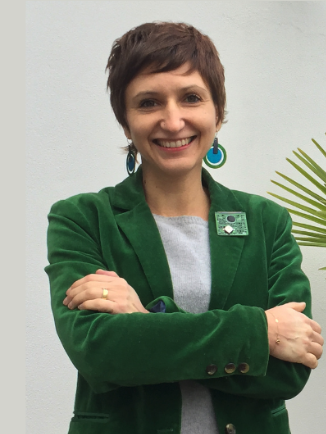Charlotte Jacquemot, lauréate de l'appel à projets pré-maturation PSL-Valorisation / Q-Life 2021
 La rééducation du langage avec l'eCALAP : l'utilisation de la psycholinguistique dans la thérapie numérique
La rééducation du langage avec l'eCALAP : l'utilisation de la psycholinguistique dans la thérapie numérique

 La rééducation du langage avec l'eCALAP : l'utilisation de la psycholinguistique dans la thérapie numérique
La rééducation du langage avec l'eCALAP : l'utilisation de la psycholinguistique dans la thérapie numérique
Graphic and verbal communication are typically thought to work in very different ways. While speech uses a conventionalized vocabulary that is acquired from children’s environments, drawing is assumed to reflect the articulation of how people see and think, with learning based on “artistic talent.” Yet, research from linguistics and cognitive science upends these assumptions, suggesting that these domains are actually not so distinctive.
Learning and decision making have hitherto been investigated almost exclusively in multicellular neural organisms. Yet, evidence for learning and decision making have been described in single celled organisms : ciliates and slime molds for instance. In this conference, in the first part of my talk, I will focus on decision making in slime molds and explore various frameworks: nutritional geometry, speed versus accuracy trade-off, Weber's law and social influence.
Neural responses and perception of visual inputs strongly depend on the spatial context, i.e., what surrounds a given object or feature. I will discuss our work on developing a visual cortical model based on the hypothesis that neurons represent inputs in a coordinate system that is matched to the statistical structure of images in the natural environment. The model generalizes a nonlinear computation known as normalization, that is ubiquitous in neural processing, and can capture some spatial context effects in cortical neurons.
This is an exciting time for scientists who are interested in cognitive development: there is now a wealth of easily-accessible data that can be used to ask interesting questions about how psychological, neural, and genetic factors affect changes in cognitive functions across the lifespan - and how they differ between individuals. In this talk, I'll describe several studies that apply individual-differences methods to large-scale, sometimes longitudinal datasets that include cognitive and biological information.
L’ingénieur travaillera au sein de l’équipe NeuroPsychologie Interventionnelle (NPI), unité de recherche mixte (INSERM, UPEC, ENS), dirigée par le Prof. Anne-Catherine Bachoud-Lévi, présente sur deux sites :
 Issue de la promotion MAG12 (Biologie, 1996), Charlotte Jacquemot a découvert les sciences cognitives à l'occasion d'un stage de magistère effectué auprès d'Emmanuel Dupoux, normalien également et actuellement membre du Laboratoire de Sciences Cognitives et Psychologuistiqu
Issue de la promotion MAG12 (Biologie, 1996), Charlotte Jacquemot a découvert les sciences cognitives à l'occasion d'un stage de magistère effectué auprès d'Emmanuel Dupoux, normalien également et actuellement membre du Laboratoire de Sciences Cognitives et Psychologuistiqu
Le site Adios Corona réunit toutes les connaissance sur le virus et l'épidémie. Des conseils, avis et recommandations scientifiques pour se protéger, comprendre et agir contre le Coronavirus. Le site propose des explications simples des articles scientifiques sur le SARS-CoV-2 responsable de la COVID-19. Il s'articule autour d'une section "Comprendre" et d'une section "Agir". Le contenu est mis à jour régulièrement, les conseils pratiques peuvent évoluer en fonction des nouvelles données scientifiques.
Artists have been doing experiments on vision longer than neurobiologists. Some major works of art have provided insights as to how we see; some of these insights are so fundamental that they can be understood in terms of the underlying neurobiology. For example, artists have long realized that color and luminance can play independent roles in visual perception.